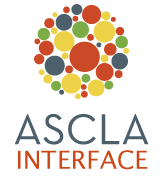Submitted by Jason LeDuc, Director of Sales, Counting Opinions, jleduc@countingopinions.com
The Arizona State Library, Archives and Public Records is a multi-faceted organization with six divisions. The Library Development Division provides consulting and best practices services, continuing education, and summer reading and early literacy programs, as well as administering LSTA grant funding and collecting public library statistics.
The organization faced the challenge of collecting and managing a variety of data. According to Laura Stone, Grants Administrator, the library wanted more control over how data collection for the annual Institute of Museum and Library Services (IMLS) survey was set up and more flexibility in accessing the data for reporting. They also wanted to collect data in areas beyond what was required. “We were using a tool to help collect data but we didn’t feel it offered the flexibility we needed. We wanted to add questions and collect data other that what IMLS requires and the tool we were using didn’t give us the control over how our data was set up in order to get what we wanted.”
Stone says Library Development was attracted to LibPASLibrary Performance Assessment Service because of the versatility in managing the collection of statistics as well as the creation of reports and data products that they could share with their libraries. Although initially interested in LibPASLibrary Performance Assessment Service because of the data collection they could do for IMLS, they wanted to explore how the product could also be used to gather and manage other types of data from their libraries. “Library Development has so many programs for which data needs to be collected,” says Chris Guerra, Project Specialist. “We saw in LibPASLibrary Performance Assessment Service the functionality and flexibility to incorporate multiple sets of data that otherwise don’t have any relation to each other.”
Fiscal year 2010-2011 was the State Library’s first full year of data collection using LibPASLibrary Performance Assessment Service. For fiscal year 2011-2012, the library added two large question sets. The first focused on the programs in the State Library’s five-year LSTA plan. “We have 20-plus different programs outlined in our plan,” says Stone. “We wanted to gather data from the libraries on how involved they are in each of those programs so that we can prioritize our resources. We were able to add these questions in-house and that was really important to us. We will use the data to drive our decisions on which programs to pursue actively. When we evaluate our plan we’ll have this comparison data to draw upon.”
The second question set focused on ebooks. Stone says this is such a big initiative for the State Library that it is important to get a better picture of what libraries are doing to make ebooks available to their patrons. They were able to drill down and ask very specific questions and to produce reports looking at ebook data that was used with the statewide planning committee. She expects that the questions about ebooks will continue to evolve so the ability to add and change questions to collect the type of data that is important for the State Library to be tracking is a tremendous time-saver.
“Being able to ask these two question sets within our traditional statistical gathering was really important to us,” Stone says. “This was the kind of flexibility we were looking for when we selected LibPASLibrary Performance Assessment Service. Having this tool gives us the data to support good decisions going forward.”
Stone says the library also was able to use the tool outside the scope of standard data collection. The State Library received two BTOP (Broadband Technologies Opportunity Program) grants from the Department of Commerce’s National Telecommunications and Information Administration. The first – BTOP 1 – was to put computers in 84 libraries across the state. It was not difficult to track the statistics from this first grant, says Stone. But BTOP 2 was a more complex project with two components: Job Help Hub and Virtual Workforce Workstations. The goal of BTOP 2 was to position libraries to help job seekers by providing both computers and trainers. The State Library needed a way to collect information from the approximately 200 participating public libraries on a monthly basis.
The solution was to provide participating libraries with separate IDs and passwords in LibPASLibrary Performance Assessment Service to log in to record their BTOP statistics. “This was completely separate from our IMLS data collection,” Stone says. “We needed this data on a monthly basis, not annually as with IMLS. It needed to be easy for the libraries to enter their own data on programming, attendance, topics, computer usage, and more. Getting this project up and running and managing it has been a fast and furious undertaking. This solution made it possible for us to meet our BTOP reporting requirements while also addressing the libraries’ needs.”
Stone stressed how the ability to use LibPASLibrary Performance Assessment Service to streamline data gathering for BTOP has made a huge difference for Library Development staff as well as for participating libraries. “It is a big deal for us that people have a consistent place to enter and retrieve data for reports. Something like SurveyMonkey would require a survey to be developed and implemented every month with a new URL for collecting responses and we wouldn’t have a good way to tie those statistics together from month to month. LibPASLibrary Performance Assessment Service cumulates the data and makes it accessible all in one place.”
